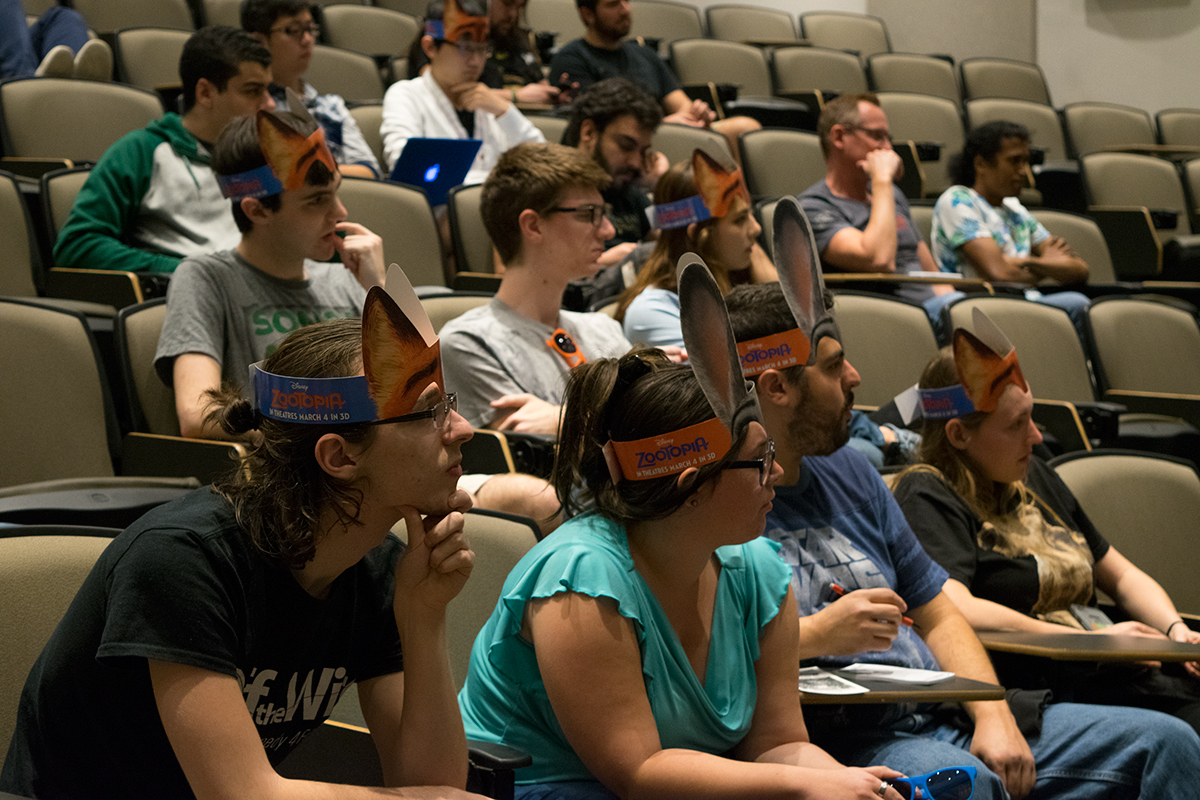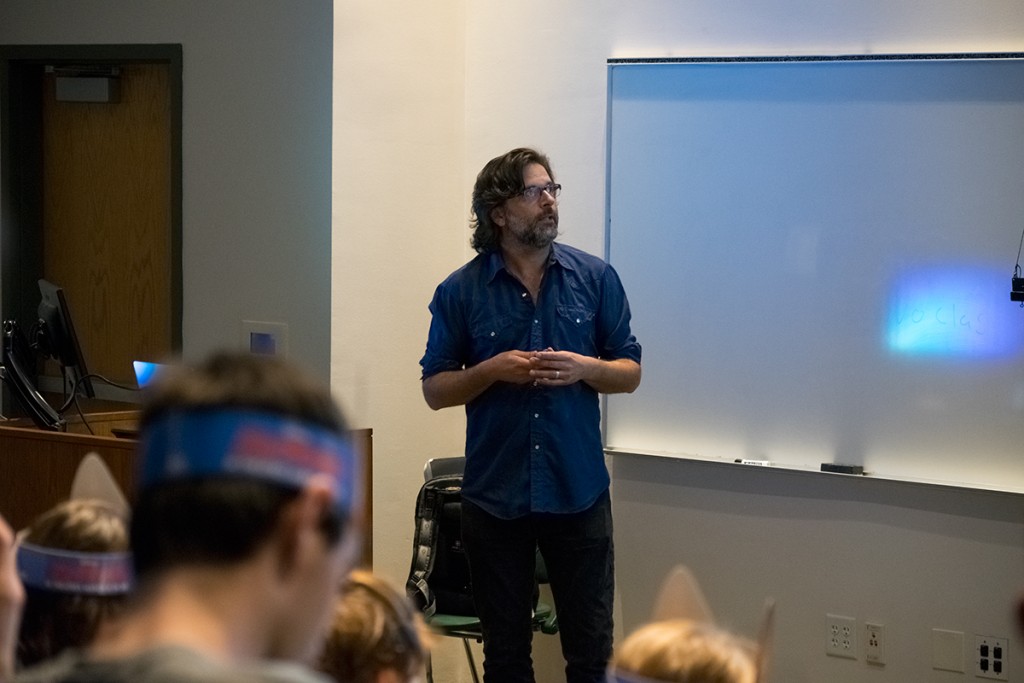

Disney’s new animated film “Zootopia” invites audiences into a world where animals have created their own city. The human behind this city is Matthias Lechner, art director of environments for the film. On Monday afternoon, students gathered in the School of Communication’s Shoma Hall to hear Lechner share his experience working on the film.
Lechner grew up in Germany and attended university in Ireland. Though his career is not necessarily the future he envisioned for himself, Lechner explained how his interest and passion for animation developed and led him to work for Disney.
“When I was six years old, I saw ‘The Jungle Book’ and I was hooked on animation. At university, I was studying classical animation and working in a studio,” Lechner said. “Afterwards, I began doing animation full-time and developed a portfolio. Eventually, I ended up at Disney. When I first heard about ‘Zootopia,’ I was hooked by the idea of animals and an animal city. If animals have evolved, what does a modern city for them look like? That was my job.”
In 2006, Disney acquired Pixar and its chief creative officer, John Lasseter, who changed the corporate culture and influenced the art directors. Every six weeks, as part of the design process of the film, meetings called “story trusts” were held to provide feedback and criticism, pitch ideas and to work to create the movie, Lechner explained.
“At Disney, everything begins with research. We looked at architecture, organic designs, jungle gardens, nature,” Lechner said.
One of the challenges of creating “Zootopia” was multi-scaling, which is environmental design that caters to the different sizes of animals. Private homes had to fit the specific animals living in them, but public buildings had to accommodate characters of all sizes, Lechner explained. One of the buildings he designed was the Burrows Train Station, inspired by a real one in Germany.
“I had a lot of fun bringing European elements into the film … it’s meant to be a globalized society,” Lechner said.
Lechner said the rural-country Burrows were inspired by his homeland and might be his favorite of the landscapes in “Zootopia.” He also described the other sections of the city, including Sahara Square, Tundra Town, the Rain Forest, Little Rodentia and the Downtown.
The creative team wanted to incorporate technology into the story and used an urban-planning tool called City Engine. As a result, the Downtown is similar to a modern-day city. It has advertisements, credit cards, street signs, cars and even iPaws (instead of iPods). Disney also brought in a climate scientist to help them map the geographical districts using weather patterns. For example, the rain in the rainforest comes from a sprinkler system that keeps the environment lush, wet and green.
“The rainforest turned out great; it was a bit of a surprise,” Lechner said.
“Zootopia” is the product of Lechner’s vision of a believable and realistic city for animals, which demanded a high attention to detail. The design process for the whole production took roughly four years and 80 percent of his designs didn’t make it.
“Many of my designs didn’t make it into the movie, and that’s the creative process,” Lechner said. “But it’s okay, because it makes the story better.”
For students interested in working with animation, Lechner emphasized the importance of gaining experience, whether in a studio or through individual projects.
“It just takes time. If you stick to it long enough, you will become a master,” Lechner said.






